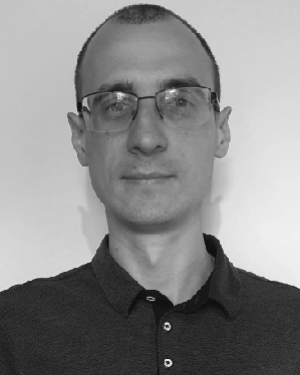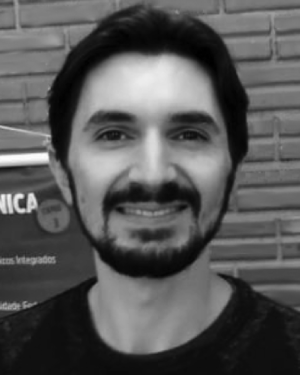Proposed AMLC model. We adopt a handcrafted-based BL and a learned-based EL, removing the ILP dependency between those layers at the encoding side.
Abstract:
Multi-layer compression is employed to achieve scalability by providing a base bitstream and additional enhancement layers to be used when extra bandwidth is available. I...Show MoreMetadata
Abstract:
Multi-layer compression is employed to achieve scalability by providing a base bitstream and additional enhancement layers to be used when extra bandwidth is available. In this work, we combine handcrafted and learned solutions, isolating the former in the base layer and using the latter in the enhancement layer. Moreover, the proposed Asymmetric Multi-layer Compression (AMLC) model decouples the base and enhancement layers at the encoding side, leveraging the end-to-end enhancement layer model to simplify the coding process. AMLC encodes an image 1.28\times faster than a fully learned multi-layer codec while maintaining similar quality and coding efficiency despite the lower quality of the handcrafted base layer used in AMLC. While the proposed asymmetric encoder together with the handcrafted base layer reduce the overall complexity, the learned enhancement layer brings benefits in terms of coding efficiency. AMLC outperforms the coding efficiency of the Scalable HEVC (SHVC) reference software, a handcrafted multi-layer codec, achieving BD-Rate gains of -27.86%, -34.19%, and -26.57% for PSNR-YUV, PSNR-RGB, and MS-SSIM quality metrics, respectively. Finally, an equivalent implementation of the proposed model adding the inter-layer dependency on the encoding side produces results that are similar to the ones from AMLC’s, confirming its potential to simplify multi-layer compression without significant losses in coding efficiency.
Proposed AMLC model. We adopt a handcrafted-based BL and a learned-based EL, removing the ILP dependency between those layers at the encoding side.
Published in: IEEE Access ( Volume: 13)
Funding Agency:

Department of Informatics and Statistics (INE/PPGCC), Federal University of Santa Catarina (UFSC), Florianópolis, Brazil
Luiz Henrique Cancellier received the B.S. and M.Sc. degrees in computer science from the Federal University of Santa Catarina (UFSC), Florianópolis, Brazil, in 2017 and 2019, respectively, where he is currently pursuing the Ph.D. degree. From 2013 to 2023, he was a Research Assistant with the Embedded Computing Laboratory (ECL), UFSC. Since 2024, he has been a Researcher with the SENAI RD&I Embedded Systems Institute. Hi...Show More
Luiz Henrique Cancellier received the B.S. and M.Sc. degrees in computer science from the Federal University of Santa Catarina (UFSC), Florianópolis, Brazil, in 2017 and 2019, respectively, where he is currently pursuing the Ph.D. degree. From 2013 to 2023, he was a Research Assistant with the Embedded Computing Laboratory (ECL), UFSC. Since 2024, he has been a Researcher with the SENAI RD&I Embedded Systems Institute. Hi...View more

Department of Informatics and Statistics (INE/PPGCC), Federal University of Santa Catarina (UFSC), Florianópolis, Brazil
André Beims Bräscher received the B.S. and M.Sc. degrees in computer science from the Federal University of Santa Catarina (UFSC), Florianópolis, Brazil, in 2016 and 2019, respectively, where he is currently pursuing the Ph.D. degree. Since 2024, he has been a Substitute Professor with the Department of Informatics and Statistics, UFSC. Since 2013, he has been a Research Assistant with the Embedded Computing Laboratory (E...Show More
André Beims Bräscher received the B.S. and M.Sc. degrees in computer science from the Federal University of Santa Catarina (UFSC), Florianópolis, Brazil, in 2016 and 2019, respectively, where he is currently pursuing the Ph.D. degree. Since 2024, he has been a Substitute Professor with the Department of Informatics and Statistics, UFSC. Since 2013, he has been a Research Assistant with the Embedded Computing Laboratory (E...View more

Department of Informatics and Statistics (INE/PPGCC), Federal University of Santa Catarina (UFSC), Florianópolis, Brazil
Ismael Seidel received the B.S., M.S., and Ph.D. degrees in computer science from the Federal University of Santa Catarina (UFSC), Florianópolis, Brazil, in 2011, 2014, and 2019, respectively. From 2009 to 2019, he was a Research Assistant with the Embedded Computing Laboratory (ECL), UFSC. From 2019 to 2022, he was a Research Scientist with the Samsung Research and Development Institute Brazil (SRBR), Campinas, Brazil. S...Show More
Ismael Seidel received the B.S., M.S., and Ph.D. degrees in computer science from the Federal University of Santa Catarina (UFSC), Florianópolis, Brazil, in 2011, 2014, and 2019, respectively. From 2009 to 2019, he was a Research Assistant with the Embedded Computing Laboratory (ECL), UFSC. From 2019 to 2022, he was a Research Scientist with the Samsung Research and Development Institute Brazil (SRBR), Campinas, Brazil. S...View more

Institute of Informatics, Federal University of Rio Grande do Sul (UFRGS), Porto Alegre, Brazil
Mateus Grellert received the M.Sc. degree in computer science and the Ph.D. degree from the Federal University of Rio Grande do Sul (UFRGS), Brazil, in 2014 and 2018, respectively. He is currently an Assistant Professor with the UFRGS, and part of the Microelectronics Group (GME), UFRGS. He has been doing research in embedded systems solutions for more than ten years. He has more than 100 published works, including topics...Show More
Mateus Grellert received the M.Sc. degree in computer science and the Ph.D. degree from the Federal University of Rio Grande do Sul (UFRGS), Brazil, in 2014 and 2018, respectively. He is currently an Assistant Professor with the UFRGS, and part of the Microelectronics Group (GME), UFRGS. He has been doing research in embedded systems solutions for more than ten years. He has more than 100 published works, including topics...View more

Department of Electrical and Computer Engineering, University of Coimbra, Coimbra, Portugal
Instituto de Telecomunicações, Coimbra, Portugal
Luís A. da Silva Cruz (Senior Member, IEEE) received the Licenciado and M.Sc. degrees in electrical engineering from the University of Coimbra, Portugal, in 1989 and 1993, respectively, and the M.Sc. degree in mathematics and the Ph.D. degree in electrical computer and systems engineering from Rensselaer Polytechnic Institute (RPI), Troy, NY, USA, in 1997 and 2000, respectively. He has been with the Department of Electric...Show More
Luís A. da Silva Cruz (Senior Member, IEEE) received the Licenciado and M.Sc. degrees in electrical engineering from the University of Coimbra, Portugal, in 1989 and 1993, respectively, and the M.Sc. degree in mathematics and the Ph.D. degree in electrical computer and systems engineering from Rensselaer Polytechnic Institute (RPI), Troy, NY, USA, in 1997 and 2000, respectively. He has been with the Department of Electric...View more

Department of Informatics and Statistics (INE/PPGCC), Federal University of Santa Catarina (UFSC), Florianópolis, Brazil
José Luís Güntzel (Senior Member, IEEE) received the M.Sc. and Ph.D. degrees in computer science from the Federal University of Rio Grande do Sul (UFRGS), Brazil, in 1993 and 2000, respectively. In 1996, he was a Visiting Ph.D. Student with the Laboratory of Informatics, Robotics and Microelectronics of Montpellier (LIRMM), France. In 2007, he joined the Department of Informatics and Statistics, Federal University of Sant...Show More
José Luís Güntzel (Senior Member, IEEE) received the M.Sc. and Ph.D. degrees in computer science from the Federal University of Rio Grande do Sul (UFRGS), Brazil, in 1993 and 2000, respectively. In 1996, he was a Visiting Ph.D. Student with the Laboratory of Informatics, Robotics and Microelectronics of Montpellier (LIRMM), France. In 2007, he joined the Department of Informatics and Statistics, Federal University of Sant...View more

Department of Informatics and Statistics (INE/PPGCC), Federal University of Santa Catarina (UFSC), Florianópolis, Brazil
Luiz Henrique Cancellier received the B.S. and M.Sc. degrees in computer science from the Federal University of Santa Catarina (UFSC), Florianópolis, Brazil, in 2017 and 2019, respectively, where he is currently pursuing the Ph.D. degree. From 2013 to 2023, he was a Research Assistant with the Embedded Computing Laboratory (ECL), UFSC. Since 2024, he has been a Researcher with the SENAI RD&I Embedded Systems Institute. His research interests include visual signal processing/coding and applied artificial intelligence.
Luiz Henrique Cancellier received the B.S. and M.Sc. degrees in computer science from the Federal University of Santa Catarina (UFSC), Florianópolis, Brazil, in 2017 and 2019, respectively, where he is currently pursuing the Ph.D. degree. From 2013 to 2023, he was a Research Assistant with the Embedded Computing Laboratory (ECL), UFSC. Since 2024, he has been a Researcher with the SENAI RD&I Embedded Systems Institute. His research interests include visual signal processing/coding and applied artificial intelligence.View more

Department of Informatics and Statistics (INE/PPGCC), Federal University of Santa Catarina (UFSC), Florianópolis, Brazil
André Beims Bräscher received the B.S. and M.Sc. degrees in computer science from the Federal University of Santa Catarina (UFSC), Florianópolis, Brazil, in 2016 and 2019, respectively, where he is currently pursuing the Ph.D. degree. Since 2024, he has been a Substitute Professor with the Department of Informatics and Statistics, UFSC. Since 2013, he has been a Research Assistant with the Embedded Computing Laboratory (ECL), UFSC. His research interests include visual signal processing/coding, video frame interpolation, and applied artificial intelligence.
André Beims Bräscher received the B.S. and M.Sc. degrees in computer science from the Federal University of Santa Catarina (UFSC), Florianópolis, Brazil, in 2016 and 2019, respectively, where he is currently pursuing the Ph.D. degree. Since 2024, he has been a Substitute Professor with the Department of Informatics and Statistics, UFSC. Since 2013, he has been a Research Assistant with the Embedded Computing Laboratory (ECL), UFSC. His research interests include visual signal processing/coding, video frame interpolation, and applied artificial intelligence.View more

Department of Informatics and Statistics (INE/PPGCC), Federal University of Santa Catarina (UFSC), Florianópolis, Brazil
Ismael Seidel received the B.S., M.S., and Ph.D. degrees in computer science from the Federal University of Santa Catarina (UFSC), Florianópolis, Brazil, in 2011, 2014, and 2019, respectively. From 2009 to 2019, he was a Research Assistant with the Embedded Computing Laboratory (ECL), UFSC. From 2019 to 2022, he was a Research Scientist with the Samsung Research and Development Institute Brazil (SRBR), Campinas, Brazil. Since 2022, he has been with the Department of Informatics and Statistics, UFSC, as a Professor, and rejoined the ECL as a Researcher. His research interests include visual signal processing/coding and related low-power hardware architectures. He is also a member of the Brazilian Delegation in the ISO/IEC JTC1/SC29/WG1 (JPEG) Standardization Committee.
Ismael Seidel received the B.S., M.S., and Ph.D. degrees in computer science from the Federal University of Santa Catarina (UFSC), Florianópolis, Brazil, in 2011, 2014, and 2019, respectively. From 2009 to 2019, he was a Research Assistant with the Embedded Computing Laboratory (ECL), UFSC. From 2019 to 2022, he was a Research Scientist with the Samsung Research and Development Institute Brazil (SRBR), Campinas, Brazil. Since 2022, he has been with the Department of Informatics and Statistics, UFSC, as a Professor, and rejoined the ECL as a Researcher. His research interests include visual signal processing/coding and related low-power hardware architectures. He is also a member of the Brazilian Delegation in the ISO/IEC JTC1/SC29/WG1 (JPEG) Standardization Committee.View more

Institute of Informatics, Federal University of Rio Grande do Sul (UFRGS), Porto Alegre, Brazil
Mateus Grellert received the M.Sc. degree in computer science and the Ph.D. degree from the Federal University of Rio Grande do Sul (UFRGS), Brazil, in 2014 and 2018, respectively. He is currently an Assistant Professor with the UFRGS, and part of the Microelectronics Group (GME), UFRGS. He has been doing research in embedded systems solutions for more than ten years. He has more than 100 published works, including topics like complexity-aware machine learning and image processing, hardware design for machine learning and video processing, approximate computing, memory-aware and energy-aware design, and efficient video-coding systems. His current research interests include efficient algorithms and architectures for machine learning, efficient architectures for video and image compression in constrained, and embedded applications. He is a member of the SBC Special Committee on Integrated Circuit Design (CECCI) and a member of the Brazilian Committee on Audio, Image, Multimedia, and Hypermedia Coding. He is the Chair of the IEEE Circuits and Systems Society Rio Grande do Sul Chapter (CASS-RS).
Mateus Grellert received the M.Sc. degree in computer science and the Ph.D. degree from the Federal University of Rio Grande do Sul (UFRGS), Brazil, in 2014 and 2018, respectively. He is currently an Assistant Professor with the UFRGS, and part of the Microelectronics Group (GME), UFRGS. He has been doing research in embedded systems solutions for more than ten years. He has more than 100 published works, including topics like complexity-aware machine learning and image processing, hardware design for machine learning and video processing, approximate computing, memory-aware and energy-aware design, and efficient video-coding systems. His current research interests include efficient algorithms and architectures for machine learning, efficient architectures for video and image compression in constrained, and embedded applications. He is a member of the SBC Special Committee on Integrated Circuit Design (CECCI) and a member of the Brazilian Committee on Audio, Image, Multimedia, and Hypermedia Coding. He is the Chair of the IEEE Circuits and Systems Society Rio Grande do Sul Chapter (CASS-RS).View more

Department of Electrical and Computer Engineering, University of Coimbra, Coimbra, Portugal
Instituto de Telecomunicações, Coimbra, Portugal
Luís A. da Silva Cruz (Senior Member, IEEE) received the Licenciado and M.Sc. degrees in electrical engineering from the University of Coimbra, Portugal, in 1989 and 1993, respectively, and the M.Sc. degree in mathematics and the Ph.D. degree in electrical computer and systems engineering from Rensselaer Polytechnic Institute (RPI), Troy, NY, USA, in 1997 and 2000, respectively. He has been with the Department of Electrical and Computer Engineering, University of Coimbra, since 1990, as a Teaching Assistant, and an Assistant Professor, since 2000. He is currently a Senior Researcher with Instituto de Telecomunicações, Coimbra, where he works on image and video processing and coding and (bio) medical image processing. He is an EURASIP member. He is the Co-Chair of the JPEG Point Cloud Coding Ad-Hoc-Group.
Luís A. da Silva Cruz (Senior Member, IEEE) received the Licenciado and M.Sc. degrees in electrical engineering from the University of Coimbra, Portugal, in 1989 and 1993, respectively, and the M.Sc. degree in mathematics and the Ph.D. degree in electrical computer and systems engineering from Rensselaer Polytechnic Institute (RPI), Troy, NY, USA, in 1997 and 2000, respectively. He has been with the Department of Electrical and Computer Engineering, University of Coimbra, since 1990, as a Teaching Assistant, and an Assistant Professor, since 2000. He is currently a Senior Researcher with Instituto de Telecomunicações, Coimbra, where he works on image and video processing and coding and (bio) medical image processing. He is an EURASIP member. He is the Co-Chair of the JPEG Point Cloud Coding Ad-Hoc-Group.View more

Department of Informatics and Statistics (INE/PPGCC), Federal University of Santa Catarina (UFSC), Florianópolis, Brazil
José Luís Güntzel (Senior Member, IEEE) received the M.Sc. and Ph.D. degrees in computer science from the Federal University of Rio Grande do Sul (UFRGS), Brazil, in 1993 and 2000, respectively. In 1996, he was a Visiting Ph.D. Student with the Laboratory of Informatics, Robotics and Microelectronics of Montpellier (LIRMM), France. In 2007, he joined the Department of Informatics and Statistics, Federal University of Santa Catarina, Florianópolis, Brazil, where he is currently a Full Professor. His research interests include video coding algorithms and VLSI architectures, energy-efficient systems-on-chip, and physical design automation of VLSI circuits. He is also a member of IEEE CASS, CEDA, SPS, ACM/SIGDA, SBC, and SBMicro.
José Luís Güntzel (Senior Member, IEEE) received the M.Sc. and Ph.D. degrees in computer science from the Federal University of Rio Grande do Sul (UFRGS), Brazil, in 1993 and 2000, respectively. In 1996, he was a Visiting Ph.D. Student with the Laboratory of Informatics, Robotics and Microelectronics of Montpellier (LIRMM), France. In 2007, he joined the Department of Informatics and Statistics, Federal University of Santa Catarina, Florianópolis, Brazil, where he is currently a Full Professor. His research interests include video coding algorithms and VLSI architectures, energy-efficient systems-on-chip, and physical design automation of VLSI circuits. He is also a member of IEEE CASS, CEDA, SPS, ACM/SIGDA, SBC, and SBMicro.View more

